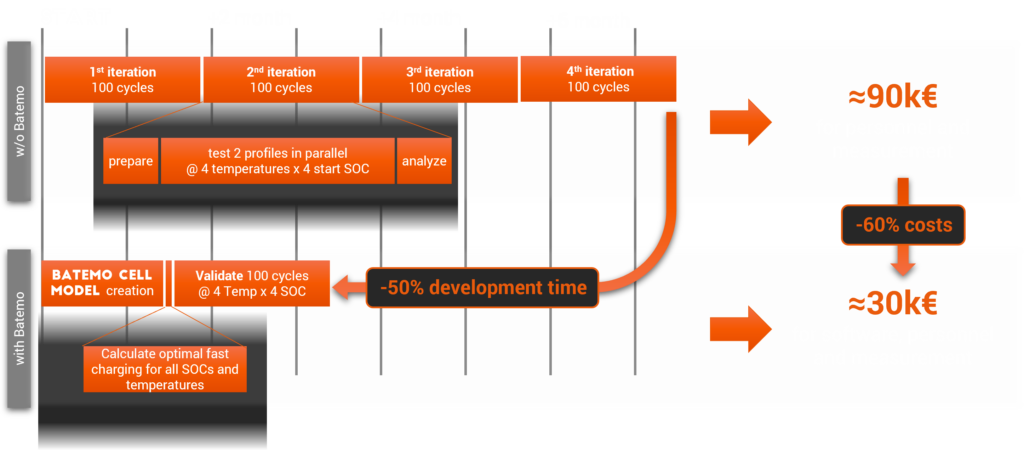Charging Time is key for high product quality.
But how to achieve charging times of
less than
15 min
?
Challenge
The fast-charging capability is a decisive purchase requirement, not only for electric vehicles. Five boundaries are technically restricting the charging time as shown below. Violating the cell-specific limits leads to accelerated cell aging or even safety risks. The progression of the maximum permissible charging current over time, considering all five limits, depends on the electrochemical and thermal initial and boundary conditions in a strongly nonlinear manner. In addition, as the anode surface potential inside the cell is not experimentally accessible, the suitability of a charging current profile can only be tested indirectly by costly and time-consuming cycling tests.
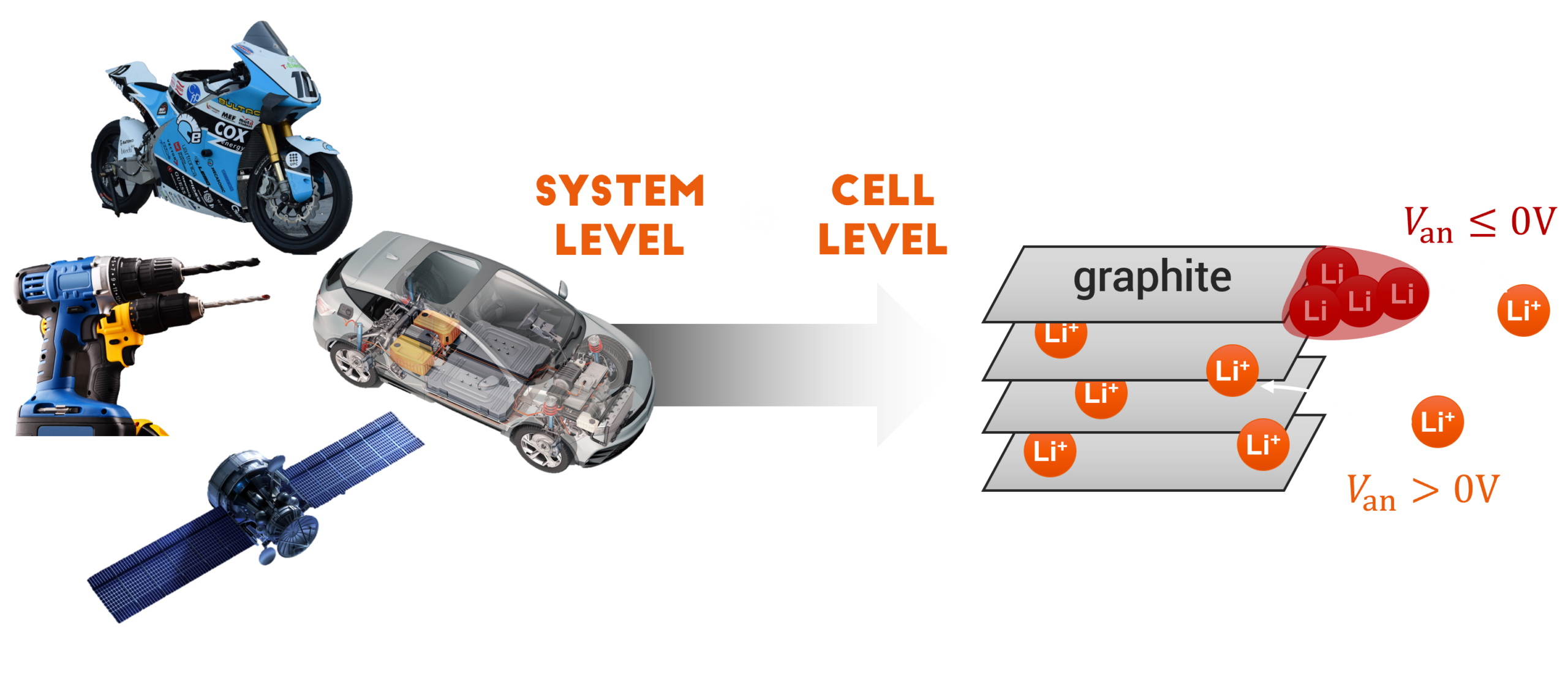
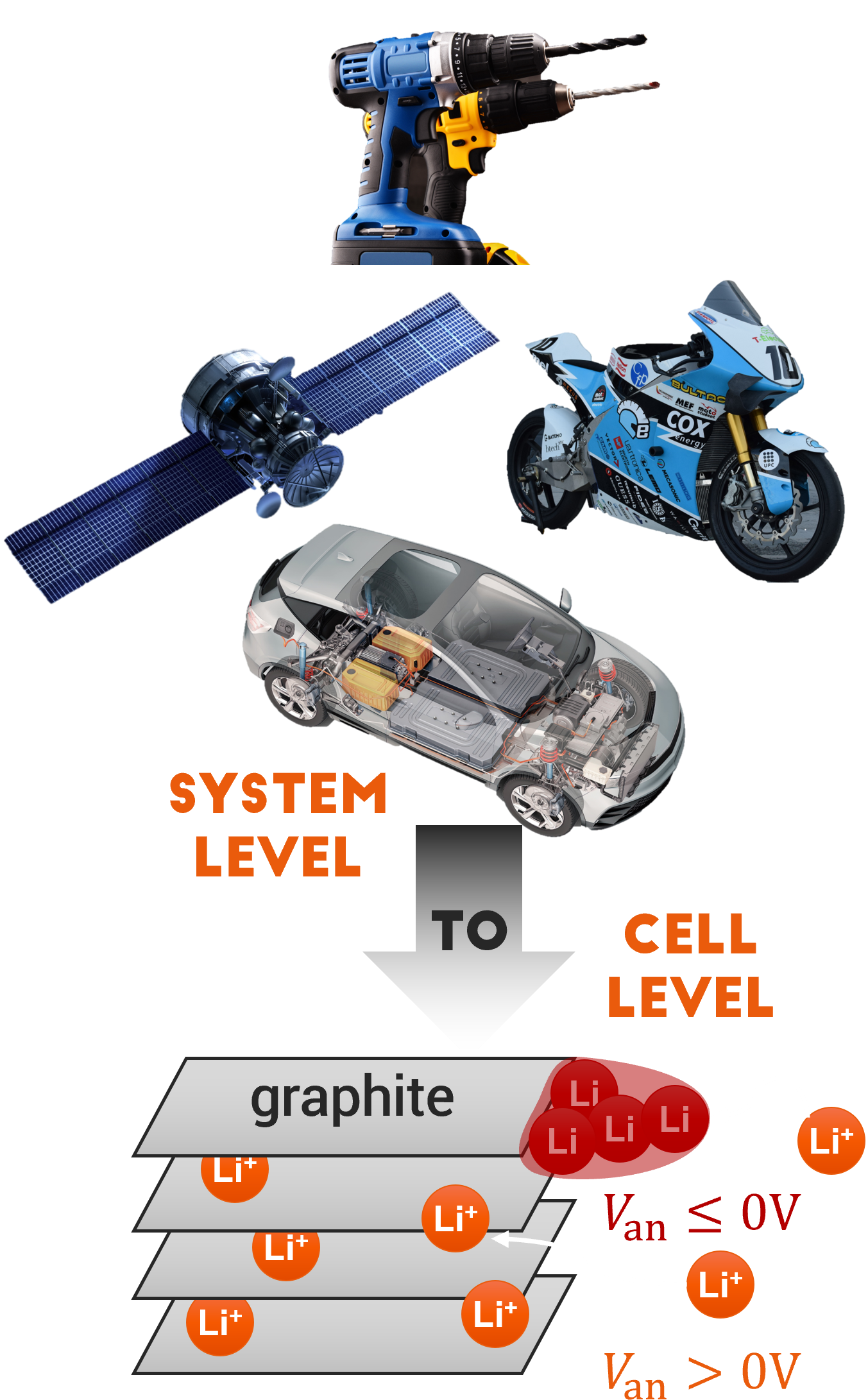
The five limits of fast-charging
1
power
2
current
3
temperature
4
voltage
5
anode
Solution - Battery Fast Charging
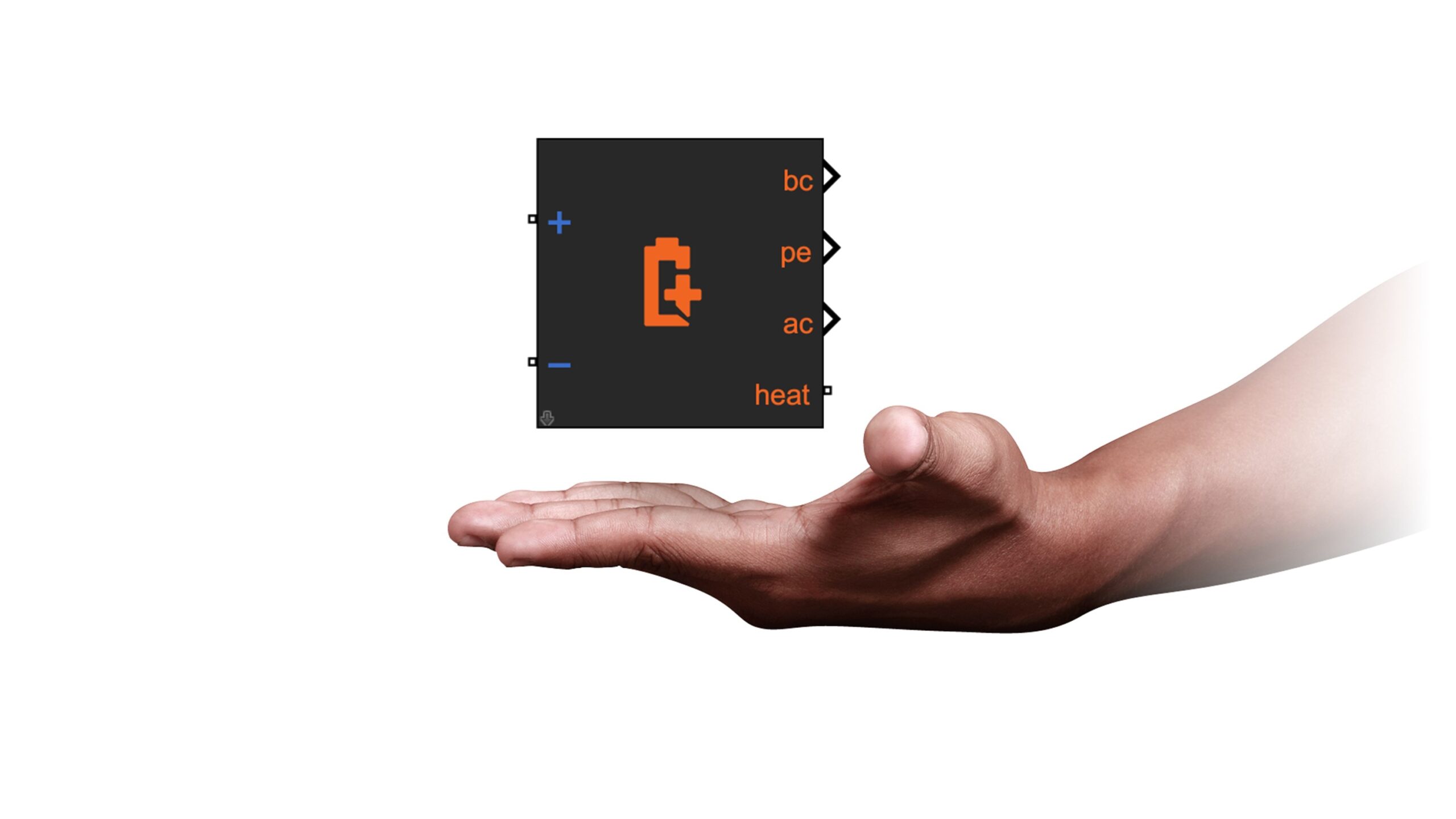
Fast
Physical
Only if you split up the physical processes in the cell correctly, you can calculate the anode surface potential and access all five limits of fast charging simultaneously.
Accurate
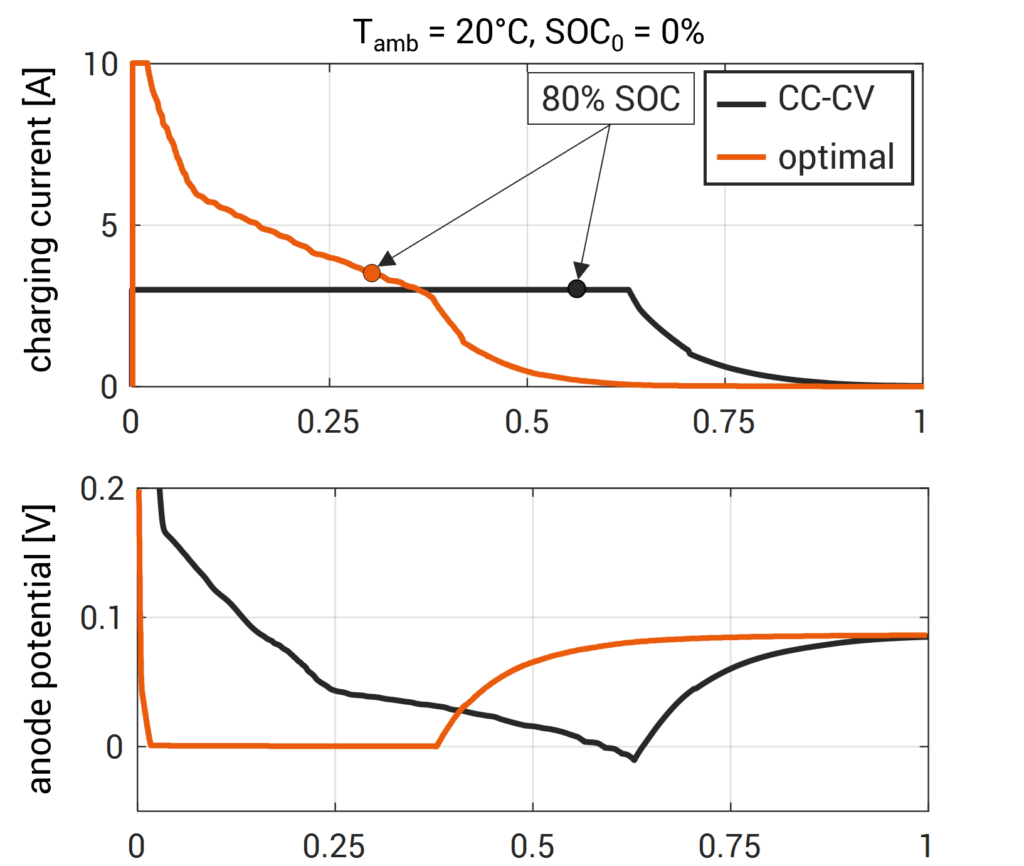
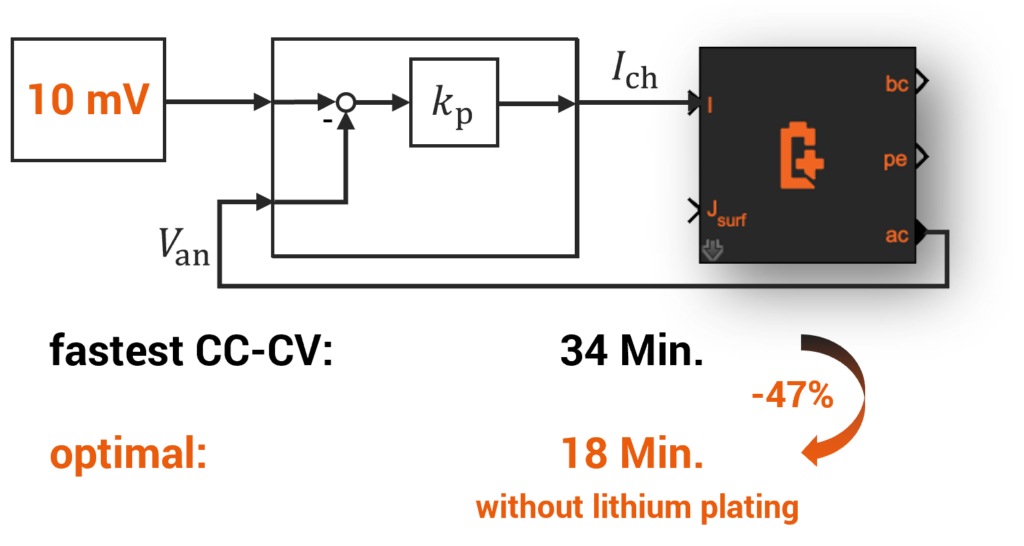
development method
-
Get the Batemo Cell Model to have a physical, parameterized and validated battery cell model.
-
Integrate the cell model into your module model.
-
Do batch simulations and derive optimal fast charging profiles and operational strategies.

avoid lithium plating!
-
Use the Batemo Cell Model to do a design of validation experiments.
-
Perform the validation experiments and directly implement it in your BMS!
Advantages
-20%
Charging Time
-50%
Development Time
-60%
Development Costs
Charging Time
Example: Tesla Model Y (4680)
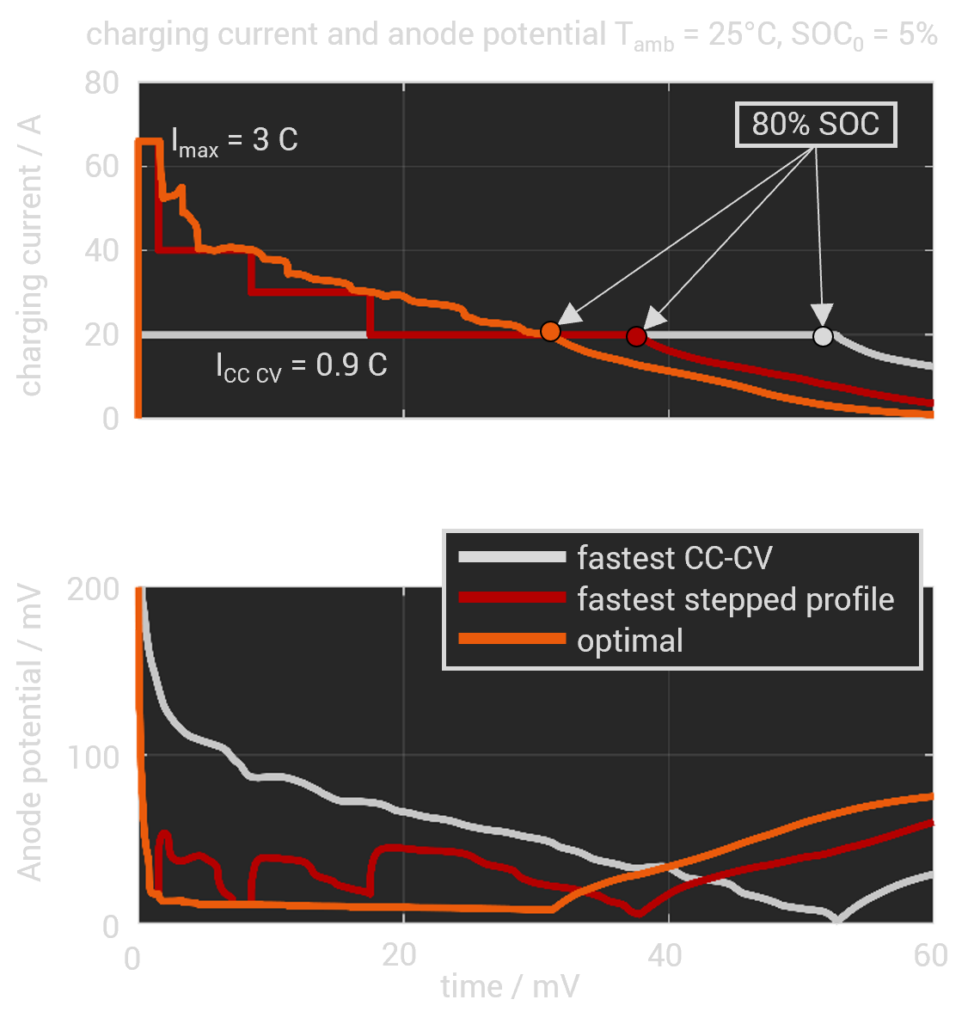


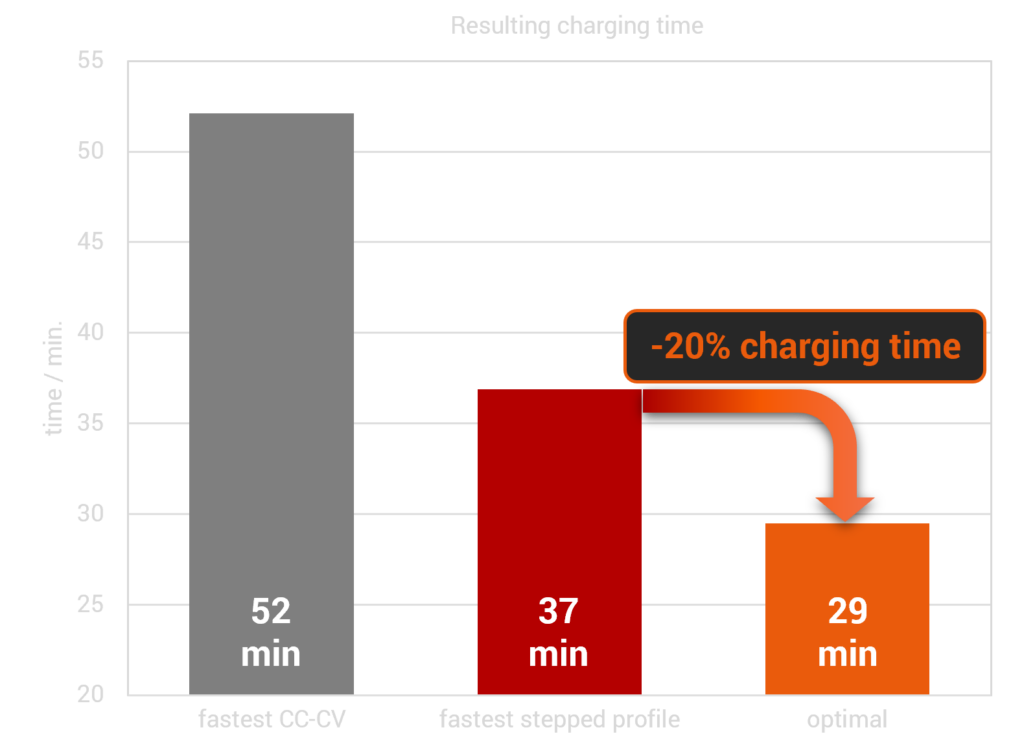
Development Time and costs
Without Batemo Technology
